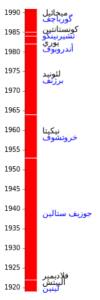
When new code does not find its way into production for quite some time, it tends to pile up. It is like with snow and when the time comes when it starts to thaw, it starts with a trickle, the trickles become a stream and all the streams rush down the mountain.
For the WMF Localisation team we worked on our documentation, our help system and our tests. We went to conferences in Belgium and India. And we worked on many small iterative improvements. We rolled out webfonts to more wikis. Input methods were improved and deployed as per requests. We have had our translation memory working on translatewiki.net for ages and now it is configured for use on the WMF wikis who use the Translate extension. Actually, we did experiment first with a new algorithm and we did configure one of the labs systems as a host for the memory of all the fine work we did and do.
Over time a lot of work went into things like plural rules. As the number of languages increase and as we support not only PHP but now also JavaScript, we are optimising our code and we are checking it again. We frequently find that a re-factoring is in order. It makes the code more elegant and easier to maintain. With added documentation and tests we ensure that we know it will work well.
 Another fine project waiting to get to the stage where it will flow into our codebase is an updated Easy Timeline. The functionality has always been broken when used in many of the “other” languages, languages written in a different direction, a different script. The updated Easy Timeline has been given a revamp; it uses SVG to create the image and you can test it at translatewiki sandbox. Amir welcomes bug reports and LOVES to hear your comments
Another fine project waiting to get to the stage where it will flow into our codebase is an updated Easy Timeline. The functionality has always been broken when used in many of the “other” languages, languages written in a different direction, a different script. The updated Easy Timeline has been given a revamp; it uses SVG to create the image and you can test it at translatewiki sandbox. Amir welcomes bug reports and LOVES to hear your comments
As you know, we use mingle for our project management (user guest, password guest). In it we have stories that explain the functionality that we are going to develop. Story 532 is one such:
As a potential translator, I want to be able to tell translation administrators in a structured way that I am interested in translating to one or more languages and at the same time provide them with some data about me and preferences on how and how often I would like to be contacted, so that translation administrators can more effectively and efficiently target translators.
Together with the acceptance criteria a narrative like this enables the developer to develop and the finished product to be accepted by our product manager. A story comes with tasks and once you have read the stories and the tasks you have a clue of what goes into getting you new functionality.
The conferences were great, we learn a lot from meeting so many wonderful people. Many tests are deployed and they run regularly. The documentation, including user documentation is written and we love you to translate many of them in your language. We feel really pumped up to get cracking and provide you with more functionality in the next sprint.
Thanks,
Gerard Meijssen
Internationalization / Localization outreach consultant

Can you help us translate this article?
In order for this article to reach as many people as possible we would like your help. Can you translate this article to get the message out?
Start translation